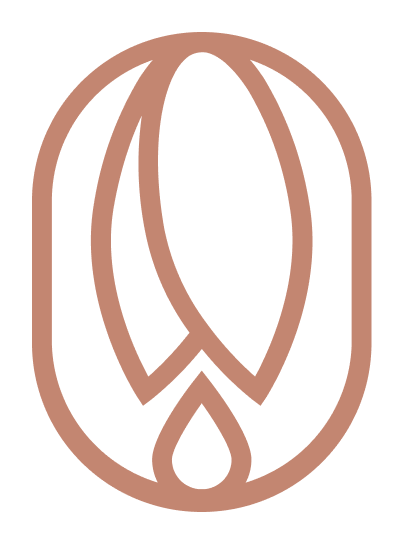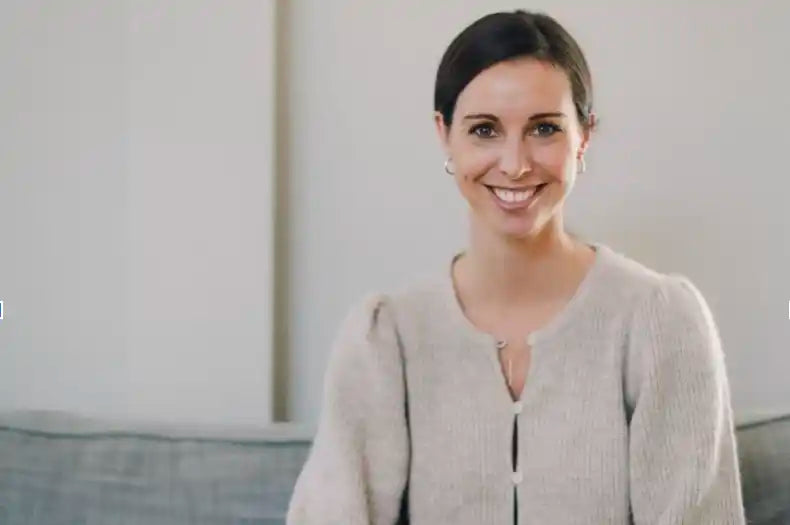For the layman, what is human design? Why is it popping up all over the internet? And what are its practical applications?
Human Design is a self awareness tool that draws on ancient and modern modalities including astrology, the Chinese i-Ching, the Kabbalah, and the Chakra System. The system is grounded in energetics and your “design” is essentially determined by the energies that were present in the universe the exact moment you were born. Think of your human design chart as a map to your own personal energetic algorithm: it’s a blueprint for how your energy is designed to move, interact with the world around it, and express itself in the most optimal and authentic way. When you’re following this blueprint, you’ll experience a sense of ease and flow in life; but when you go against this natural energetic operating system, you’ll experience resistance in the form of frustration, anger, resentment or disappointment. The entire premise of human design is that we’re all designed to be unique for a reason. And yet, we live in a world that puts enormous pressure on us to think, act, work, communicate and play in specific ways. Understanding your design (and other peoples’ designs) gives you permission to lean into what works for you and become the most authentic version of yourself, instead of the person the world tells you to be.
Q. How did human design make its way into your life? Can you tell us a little bit about yourself and your work?
A. I have always been obsessed with personality tests and any tool that offered more insight into myself and others. When I left my corporate job in New York City to start my own company with a close friend, I dove deep into all things personal development in an effort to better understand myself and my purpose. Somewhere along the way, I discovered human design and I instantly fell in love with the way it combined the “woo woo” with so much practical information about how to live more authentically. When I saw an ad for a reader training course, it was a very clear HELL YES, but I signed up with zero intent of turning it into a career. As part of the training, I started doing sessions for friends and family and quickly realized how much joy this practice brought me. I also noticed that there was a huge need for someone to translate this system in more relatable, practical ways–especially for people who may not be as familiar or open to the “woo”. I was uniquely positioned to do this given my corporate background. So, I started an official “side hustle” as a human design coach and the rest is history. Over the years, I’ve grown my human design business–very intentionally–to take up about 50% of my work week. After having my son, I also shifted my focus to incorporate more content geared towards parents because I found this tool to be invaluable in navigating the often uncertain and overwhelming world of parenthood.
Q. How can human design support the postpartum season? Specifically when it comes to our unique needs and relationship with rest, self-care, nourishment, and navigating transitions?
A. The postpartum season – at least in my experience – can be incredibly isolating. We aren’t given nearly enough support and guidance, so in many ways it can feel as if we’re on our own. But without a clear roadmap, and without personal experience (for first time moms), it’s hard to know where to start; it’s hard to know what exactly we’re missing or what we need. The focus is on the baby and keeping them alive, but the old adage is true: you have to put your own oxygen mask on first, before you can help others. Your human design offers insight into what it looks like for you to put your own oxygen mask on and what behaviors or feelings may indicate you need to pull on your emergency ripcord and get help. It also offers insight into the type and frequency of rest you might need, how to nourish your body in the most supportive and effective way, and what true self-care looks like for you.
Knowing these things in advance is particularly valuable, because you can create a plan to ensure you have a support system in place. For example, as a generator, I knew that doing ONE thing for myself each day that brings me joy (i.e., going to my favorite coffee shop, seeing a friend for a quick walk, cooking my favorite meal) would make a world of difference. So, I made sure I had coverage and plans to do these things. But if you’re a projector mama, you may want to prioritize solo time or a nap instead.
Q. Can you brief us on the different energy types and the strategies for each? How could this play into postpartum?
A. There’s a LOT to unpack here, so I’ll try to be as succinct as possible. Everyone has one energy type, based on their birth time, date and place. There are five potential types and each represents a slightly different way of investing energy in order to get the greatest return on that investment. There are so many more layers of a human design chart, but this is like the outer layer of the onion–without understanding and honoring your energy type, you’ll never achieve true alignment
-
Generators & Manifesting Generators
Together, they make up about 70% of the population. Generators and man-gens are here to energize the world around them by being beacons of joy and enthusiasm. They have a very sustainable energy source (the sacral center) and often act as the “motors” of society, moving things forward at a very steady, reliable pace. However, to reach their full potential of aliveness, they must be investing their time and energy in things that excite them. If they force themselves to spend time and energy on activities or people that don’t feel like a “HELL YES”, they can feel drained, depleted and stuck. In postpartum, it’s especially important for generators and mangens to prioritize what brings them joy – even if it feels impossible or inconvenient, or selfish. If you have a favorite lunch spot, ask a friend to meet you there or bring over takeout. If you love baths, indulge in one at least every other day (and don’t cut them short!). If you enjoy a particular form of movement, sign up for a class as soon as your doctor approves and get someone to cover at home. Doing at least one thing a day just for your own pure enjoyment will make you a more energized, patient mother. Keep in mind: generators and mangens are often praised for how much they can DO and take on, so many of you will come to associate your self-worth with how much you’re do-ing. During postpartum, when a lot of the “work” is invisible (i.e., letting your body recover!) and involves you being a milk factory, it’s easy to get down on yourself or push yourself to do more. Remember, your worth is NOT what you do, it’s who you ARE. So focus on being the best, most energized version of you for your child.
-
Projectors
Projectors make up about 20% of the population and they are here to be our guides. Projectors are excellent advisors and they can easily identify ways to make situations, projects or people operate more efficiently. Their attention often fixates on what’s wrong, missing, or in need of improvement–and they have the ability to devise brilliant solutions to these problems. Unlike generators and mangens, projectors don’t have their own energy source; their energy depends on the people around them. As a result, their energy is inconsistent–it ebbs and flows. In order to make the most of their energy, projectors work best when they can focus on ONE thing at a time in short bursts. In between these short, intense bursts, projectors need lots of alone time to rest and recharge. Because of this, it’s best for projectors to operate in a more passive way–waiting for people and opportunities to come to them. It’s also important for projectors to focus on what they’re naturally good at–the gifts that come most easily to them–as these activities will be more energy-efficient. Pregnancy and birth can take a LOT out of a projector, and they may feel quite depleted going into postpartum. However, in other ways, the pace of postpartum and the permission slip to slow down and spend a lot of time lounging in bed or on couches, will be welcomed. However, being permanently tethered to another human being may be particularly challenging for you, so finding moments to separate yourself from the baby and lie in bed alone with the door closed is essential. Once you feel up to doing more around the house, I recommend picking one or two activities that feel the most effortless and outsourcing the rest to friends, family or professionals. Moreover, be smart about how you approach postpartum life; think creatively about how you can get kill two birds with one stone (i.e., bathe yourself and the baby at the same time) or find little hacks to optimize household tasks (i.e., ordering groceries to be delivered). -
Manifestors
Manifestors make up about 9% of the population and are our trailblazers. Manifestors are here to have an impact on the world around them, which sometimes involves challenging the status quo or triggering some people in the process. Manifestors are designed to experience intuitive or emotional urges to act; and it’s important that they respond to these urges. It helps for them to communicate what they’re doing and why to loved ones, since they move at a very fast pace and can be hard to keep track of sometimes. Manifestors value their freedom above all and may get angry when they feel limited or held back. Postpartum can mean some physical and emotional limitations–not to mention that there’s a needy baby who constantly wants something from you. This can be a challenging transition for someone who’s used to moving to the beat of their own drum. Manifestor energy is more erratic; it comes in big waves of creative output with high highs and low lows. Arguably, the ultimate creation is a baby, which means that pregnancy is often followed by a period of low energy during postpartum. Embrace this low and be extra gentle with yourself. Remind yourself that your energy will return, and the more you give in to your need for rest now, the stronger your energy will be when it comes back later. As a manifestor, it’s important for you to approach parenthood–and postpartum–in a way that works for you. So throw away the books and take the podcast you’re listening to with a grain of salt. Tune into your own intuition and what YOU need in order to feel like the best version of yourself postpartum. If that means getting extra help to cover an occasional night shift, getting a weekly massage, or adding in some formula to relieve you from the constant need to feed, DO IT.
-
Reflectors
Reflectors are the most rare type–only 1% of the population– and are here to be our truth tellers. Reflectors are incredibly sensitive and pick up on anything and everything in their environment. As a result, they are very wise about others and the world at large. They see right through the B.S. to the heart of the matter. Reflectors are designed to change and adapt in response to their environment; when they’re surrounded by generators, they’ll take on generator energy, but when they’re with a manifestor, they’ll naturally mirror the manifestor’s disposition. As a result, they cannot be labeled or defined because they are constantly evolving. It’s important for reflectors to take a lot of time to make decisions, because who they are and how they feel tomorrow may be different from today. They gain clarity over time. But while they’re waiting for that clarity, it’s imperative that they live in the moment and avoid trying to predict how things might shake out. As soon as they harbor an expectation, they risk becoming disappointed. So my best advice for reflector mamas is to let go of any expectations you might have around postpartum. Plan to approach it one day, or moment, at a time. Some days will be easier than others, and all you need to know is that everything is temporary. Be incredibly thoughtful about who you allow in your space during the postpartum season given your sensitive nature. Surround yourself with people and things that make you feel good. Invest in making your bedroom or the nursery a sanctuary, because your environment will have a major impact on you. Use your powerful intuition to tune into your child’s needs and trust that you can absolutely read them like a book. Finally, rely on your support system. Don’t hesitate to ask for help.
Q. I intuitively feel that the one size fits all approach to all of life, but especially pregnancy, birth, postpartum, and motherhood is totally outdated. I don’t feel aligned with blanket advice and always tend to the gray areas, the nuance. How do we strengthen our trust muscles using our unique human design to live in alignment?
A. In human design, we each have a primary internal compass that acts as our main decision making hub–it’s called your “authority”. This is the part of you that is most consistent and reliable when making decisions or navigating uncertainty. If you know your authority, it makes it easier to trust yourself and let go of the pressures you’ll inevitably feel from the outside world (based on what we’re reading, listening to, hearing from friends, etc.). The authorities are:
- Emotional – designed to make decisions based on your feelings, emotions and moods, but only once they’ve settled.
- Sacral - designed to make decisions based on your gut and what feels like a HELL YES.
- Splenic - designed to make decisions based on your intuition; that little voice that comes out of nowhere and often doesn’t make any logical sense.
- Ego - designed to make decisions based on what would be best for you; aka being selfish is a good thing.
- Self-projected - designed to make decisions with the help of a sounding board: you find clarity by voicing your thought process and considerations out loud to someone (or the wall), or journaling it out.
- Mental - designed to make decisions based on your observations.
Q. It's my personal mission to make rest and nourishment sexy, to bring pleasure into the mundane, to connect us to the rhythms within and around us, and to show instead of tell the way. I think conversations like this are an opportunity to do all of those things. To wrap this up, what is one open-ended piece of advice when it comes to surrendering to the mystery of birth and postpartum?
A. Postpartum is a period where you can feel very raw and vulnerable (at least I did!). It’s uncomfortable, because a lot of the crutches you used to depend on, or allow to distract you, disappear. You have no control over your body, the new baby, your emotions. Instead of resisting this change, or comparing this new version of you to the person you were before, embrace it. Use it as an opportunity to get to know the real you even better. Who are you without the masks, the titles, the accomplishments, the to-do list, and the excuses? Who are you and what do you need to feel like the most alive, authentic version of you? If you approach this time with curiosity instead of judgment, I guarantee you’ll come out of it stronger and more confident–not just as a mama, but as a human being.







